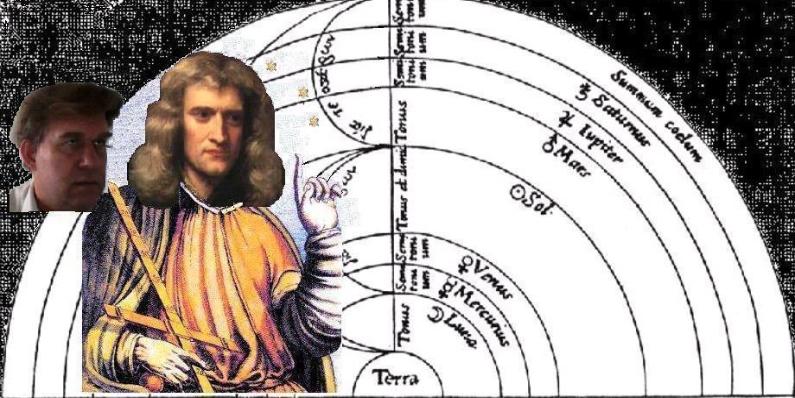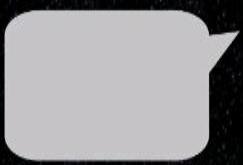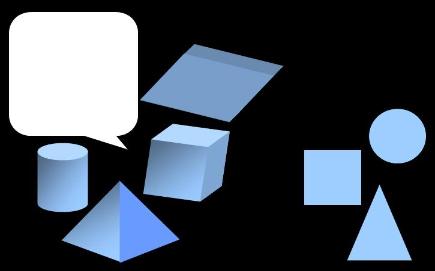1.0 Is a plane infinite or finite?
The mathematician begins his presentation by claiming that a plane is infinite:
- “ plane: A flat surface that extends infinitely in any direction in three dimensions. A
plane is represented by a closed four-sided figure.” [1]
“ 2D space consists of a flat plane, extending in length and width indefinitely” [2]
“It is difficult to draw planes, since the edges have to be drawn. When you see a picture
that represents a plane, always remember that it actually has no edges, and it is infinitely
large.” [3]
“ A plane is a flat surface that extends without end in all directions... Intuitively, a plane
may be visualized as a flat infinite sheet of paper.” [4]
These definitions and notions summarily violate Euclid's definition of the word figure:
- “ A figure is that which is contained by any boundary or boundaries.” (Bk. I, Def. 14) [5]
Therefore, whatever these 'experts' are referring to is not a part of Geometry.
Nevertheless, I wonder what such a contraption as defined by the mathematicians might be used for. No one has
ever seen or imagined an infinite plane, whatever that is. If you have, go ahead and draw one for me. I betcha
anything you draw has boundaries! If the circle or the square were to be infinite, we would not be able to
distinguish one from the other. How would we establish relations between these alleged figures? How are we
supposed to visualize that a plane is 2-D if it cuts the Universe in half? How do you get to the other side of the
plane if the plane is infinite? How can you discard the possibility that you are in fact sitting on a cube (Fig. 1)?
How long should we watch this movie or how far should we travel before we can call it a plane?

| The edge of space? Sure! Just beyond Summum codum! |
- Module main page: The 3-D planes of Mathematics
Pages in this module:
- 1. What is a plane?
2. Is a plane the same as a surface?
3. This page: What does an infinite triangle look like?
4. Rough planes
5. How do you tilt a square?
6. What is a triangle?
7. What is a circle?

| What does an infinite triangle look like |
| Adapted for the Internet from: Why God Doesn't Exist |
As with most words used in Mathematical Physics, we can trace most of the problems with the word plane to
faulty definitions. The word plane has its roots in the Latin planus, meaning flat, which in turn has more ancient
origins. Hence, this word started out as an adjective. Unfortunately, the Greek geometers converted it into a noun.
The word plane is a noun if it is a synonym of face, like the face of a cube, in which case it is definitely a finite
object. It becomes an adjective when we use it in lieu of flat. (e.g., a plane triangle). The presenter is merely
reconfirming that a triangle is flat. In this context, the word plane is redundant and unnecessary. The main point,
however, is that the word flat does not mean infinite. There is yet a third possibility and that is when we use the
word plane to designate a category of objects that are flat. As the heading of a category it is grammatically a noun,
but what we are actually referring to is that a circle or a square belong to the category of ‘flats.’ Again, as a mere
category (heading), the word plane cannot itself be qualified as infinite or finite. A circle is not infinite. It is just flat
and rightfully belongs to the category of geometric figures known as planes. Hence, it makes no sense to qualify
planes as infinite under any of its definitions, more so if we factor in that, like an edge, planes are not standalone
objects (Fig. 2).

| Whew! I'm pooped! We've walked infinitely today, Steve, and we still see no boundary. I guess that confirms our hunch. Our world is flat as a pancake! |


| No! It’s just that we never figured out how you guys manage to live on your own. |
2.0 The words infinite and infinity are unscientific
For the purposes of Science, an object is that which has shape. There is no such thing as an infinite geometric
figure. Therefore, even as a category of geometric figures, the infamous mathematical plane cannot be infinite.
An infinite object is a self-contradiction because it violates the definition of the word object, a word that happens
to be a synonym of finite. The word object implies form, and we cannot talk about shape if the object extends
'infinitely.' To declare that an object is infinite is also irrational because the presenter is saying in a round about
manner that he has yet to reach the end of the thing. How does he know that it is infinite? Perhaps he simply
needs to walk a little further!
The mathematician is actually saying that the carpet grows faster than he can make up the distance. But size is
not a problem in Science. From God's perspective, everything has shape. The proponent merely needs to
present a mockup of what he thinks the carpet looks like before he talks about the carpet, and hopefully, this
means that the carpet has a contour. The mathematician is confusing proof (what he can verify or measure)
with what is irrespective of observers. In Science, we don't need to walk to the end of the park to verify that it is
indeed a rectangle. The park is a rectangle or not whether there is anyone on the planet to admire its beauty.
A park is a rectangle by definition: because it belongs to a category of geometric figures that meets certain
requirements. Nevertheless, a triangle has no dynamic properties. It may be flat, round, or made of so many
lines or sides. None of these qualitative parameters require motion or measurement. The word infinite , instead,
dares the juror to walk until he finds an edge to the figure. Therefore, the word infinite is unscientific and should
be removed from the vocabulary of Science. There is no context in which anyone can use the word infinite
consistently.
3.0 Conclusions
Whenever the mathematician says that a plane is infinite, he is not referring to the category called planes (I’ll
again write it in plural form). He is referring to the hyperplane, an unfathomable 0-thickness sheet that divides
the Universe in half. The mathematical hyperplane is not a geometric figure. A hyperplane is an activity: cutting
something in half. The mathematicians are confusing a cross-section of an object with the category of geometric
figures known as planes. For the purposes of Science, a hyperplane or cross-section is not a plane. These
definitions and notions cannot be used to designate geometric figures, which means, in turn, that such notion is
divorced from Geometry.
Fig. 2 square joke |
| Fig. 1 The infinite plane |
- ________________________________________________________________________________________
- Copyright © by Nila Gaede 2008
